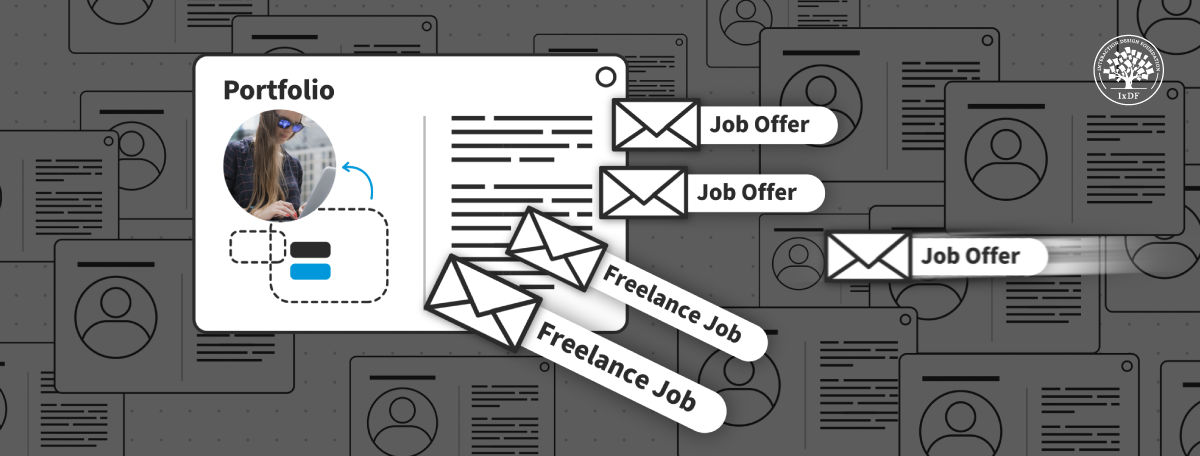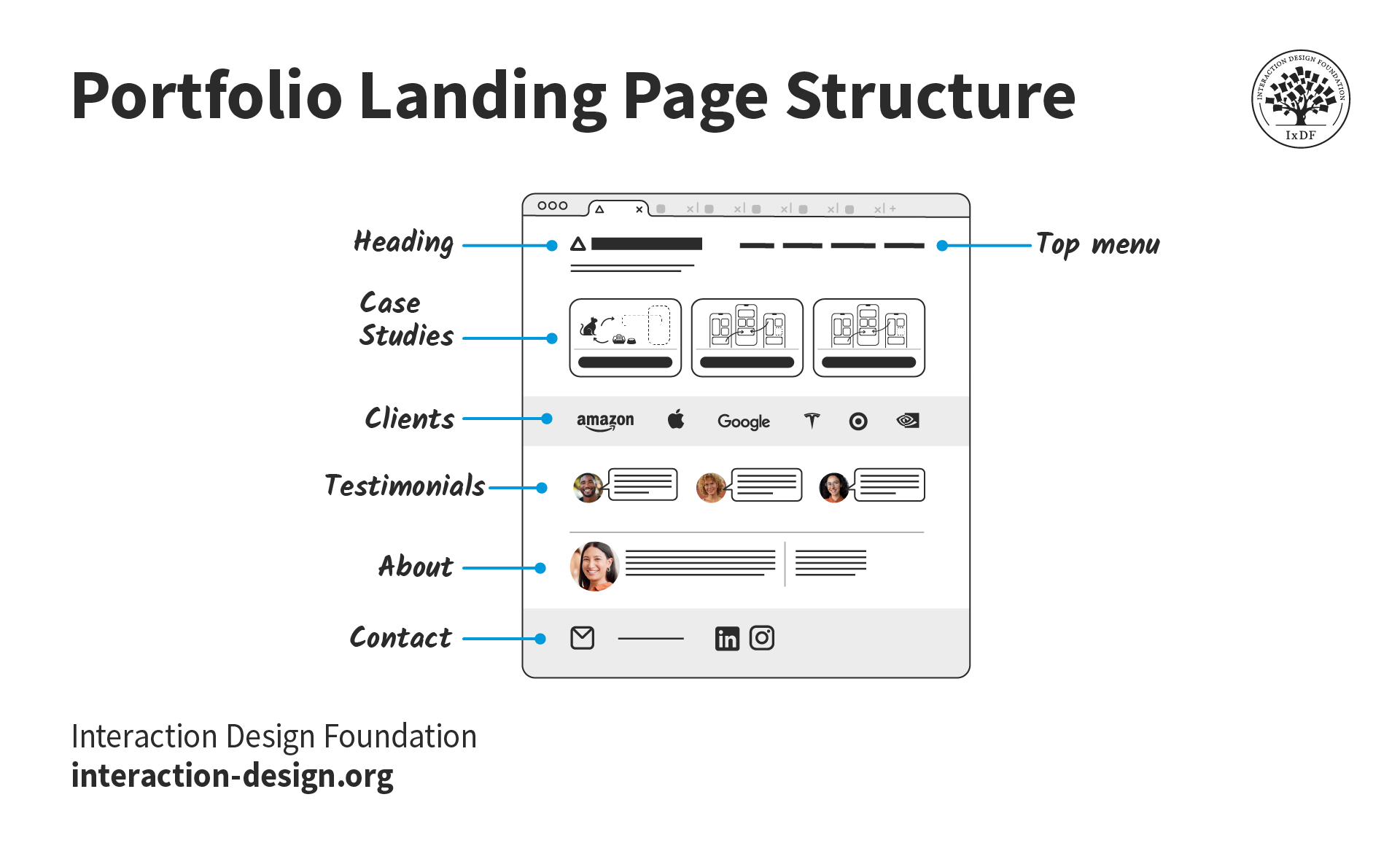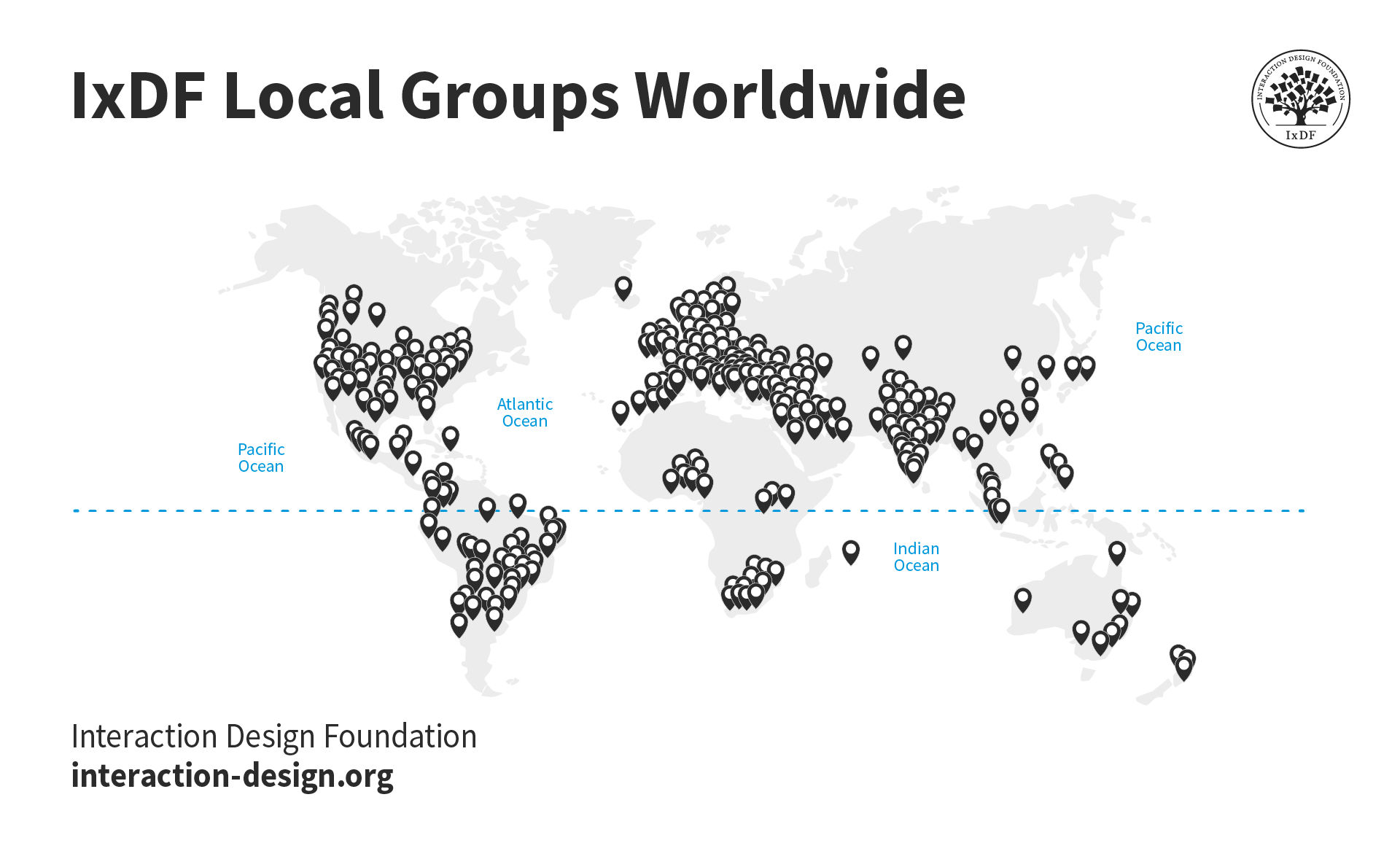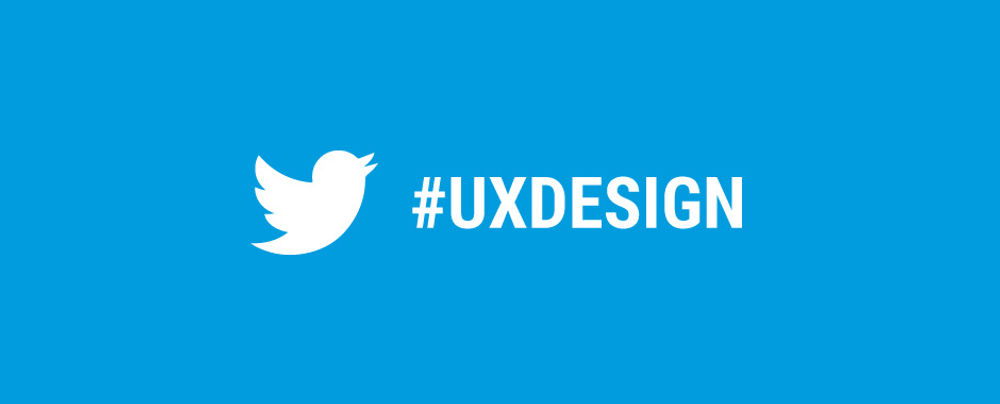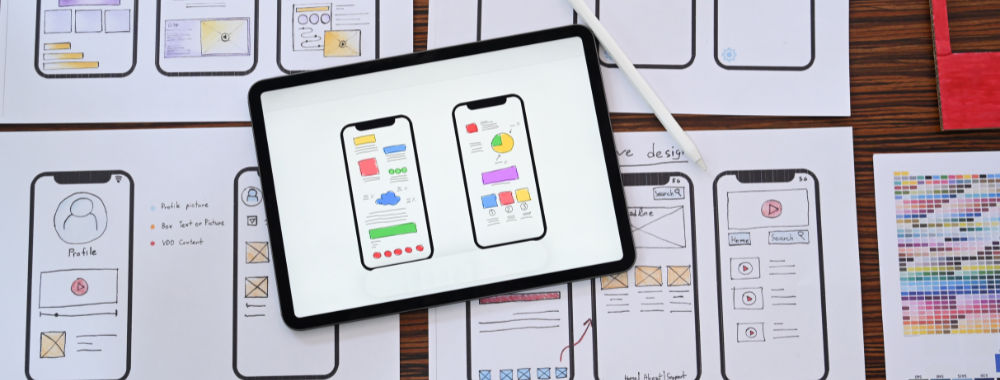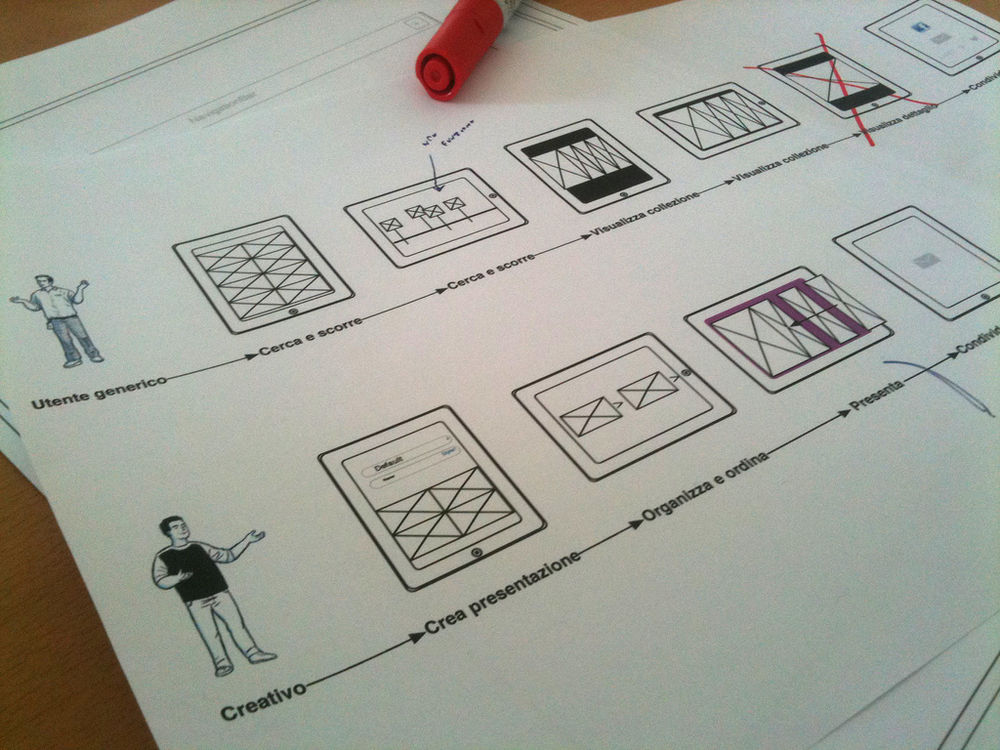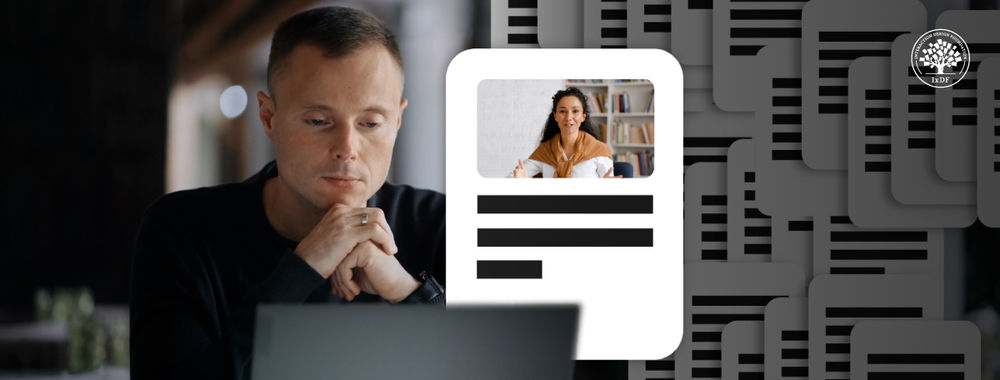You may never have a more important design project than your UX/UI design portfolio. So, how do you ensure you make the most of all your hard work and determination? Your UX portfolio is like any other iterative design process. As you evolve as a designer, it must evolve along with you. Look after your portfolio—it will become your greatest advocate and cheerleader. But it doesn’t stop there. Your portfolio extends beyond its role as a job-hunting tool—it can build your recognition and reach as a designer. Follow these steps, and you’ll have a portfolio that grows with you, expands your network and continuously propels you to new heights.
1. Fine-Tune Your UX/UI Design Case Studies for Maximum Results
Before you hit send on your first job application, take a moment to check if your UX (user experience) portfolio lines up with your career goals. Is it a perfect match?
For instance, if you want to be a UX researcher, then your portfolio should feature case studies that shine a light on your UX research expertise. It seems obvious, but you may have had job functions in past projects that are less relevant to your current goals. Research methods, interview skills and data-driven design should take center stage in this scenario. Similarly, if you’re targeting a particular industry, like fintech, tailor your portfolio to it.
Morgane Peng, Design Director at Societe Generale, explains the importance of a content strategy to your portfolio:
Show
Hide
video transcript
- Transcript loading…
Remember to cross-reference your UX design portfolio against the job description, and then repeat 10 more times! Aim to address all the requirements in your portfolio, even if you don’t 100% meet the criteria. For example, a role may ask for a background in accessibility but you have limited experience. If you amend your case study evaluations to discuss how you could have improved accessibility, you’ll highlight these three qualities:
Your attention to detail.
The knowledge you already possess and your drive to grow further.
Your ability to self-evaluate.
Now, what if you want to apply for more than one job role? Perhaps you’re looking at both generalist UX designer and specialist visual design roles. In this case, you have a few options:
Select case studies that work equally well for both types of roles. This approach may cause your portfolio to lose a little focus, as some case studies will target one job role while others will focus on a different role. However, with a one-size-fits-all UX portfolio, you will need to make some compromises.
Give each type of role its own page in the portfolio. You will need to produce more case studies to cover both sections, but this approach may increase your chances of getting an interview. That said, a design portfolio should be as easy to navigate as possible, otherwise it may confuse and put off hiring managers. Take care of your portfolio’s layout to ensure it has good UX before you hit send.
![]()
Did you know we make a decision based on the visual layout of a webpage in as little as 50 milliseconds? If we don’t like it, we’re less likely to stay. For this reason, the landing page design of your portfolio deserves care and attention. With many portfolios to review, busy hiring managers won't hesitate to discard ones with confusing layouts. Showcase your UX skills with a user-friendly layout that guides, not frustrates, potential employers.
© Interaction Design Foundation, CC BY-SA 4.0
Use your design skills to find an innovative solution. As with any other design project, you can research, ideate and test your portfolio to find the best solution for your needs. A well-thought-out, creative portfolio will give hiring managers a true taste of your capabilities.
2. Great Isn’t Good Enough! Embrace Feedback for UX/UI Design Portfolio Excellence
Imagine you’re building a mobile app. After months of blood, sweat and tears, you’re ready to put it out in the world. Would you launch without testing it? Of course not!
The same goes for your portfolio. Testing and feedback are vital to ensure your portfolio performs as it should—as a job-winning machine. Many ways exist to gather feedback on your portfolio, but we will concentrate on two.
The Design Community
Your fellow designers are some of the best people to give you feedback. Take advantage of their experiences and design brains regardless of their career stage. Leverage your network (online and offline) and share your portfolio around:
Create a “feedback swap” post on social media or a forum where you exchange portfolio feedback with other designers.
Reach out to designers who are hiring managers and ask for their feedback. Many senior designers want to give back to the community, and you’d be surprised how few people reach out to them.
Attend a local meetup for UX designers. For example, you can join your IxDF Local Group and attend regular design events near you, or, arrange your own. In-person feedback tends to be more raw and spontaneous. On the other hand, with online feedback, people often edit their feedback before they hit send. In-person feedback is invaluable; you'll discover people’s real first impressions of your portfolio.
![]()
IxDF Local Groups are a valuable resource to network and discover opportunities. Over 500 Local Groups worldwide support local design communities through meet-ups and forums. Join a local group to network with designers of all disciplines and perhaps even some hiring managers! Meet people who share your passion for design and ask them for their feedback.
© Interaction Design Foundation, CC BY-SA 4.0
Potential Employers
Approach your interviews with the mindset of a designer and use the opportunity to seek feedback on your portfolio. Ask for feedback on your portfolio towards the end of the interview. This is the time when recruiters typically ask if you have any questions for them. Use these tips to get the most valuable feedback:
Get specific: Consider which areas of your portfolio you want feedback on. General feedback is helpful, but your results will be more actionable if you focus on specific elements. You may want to know:
How well the portfolio addressed the particular role.
Whether you included too much personality.
If your case studies are detailed enough.
Be open to criticism: Prepare yourself to approach the feedback with an open mind. For example, you may have implemented some fancy website animation in your portfolio. During the interview, the hiring manager said the animation took too long to load and play. As a result, they had to wait to access your case studies. While you’re proud of the animation, it probably isn’t serving you well.
Ask for solutions: Your interviewers might be designers. They might not be. Either way, ask them how they would approach the issues with your portfolio. If you ask for help, you will show a willingness to learn and respect for others’ points of view.
Follow up: Always send an email to the hiring manager to thank them for their feedback, whether the interview was a success or not. Implement their feedback (if you want!) and include your updated portfolio in the email. Even if you don’t get the job, you'll leave a lasting impression.
3. You Never Know When You’ll Need Your UX/UI Design Portfolio, So Keep It Fresh
You may not be planning a change in your UX career any time soon, but you should still regularly update your case studies. There might suddenly be an opening at your dream company, or a designer you admire might ask if you want to join their team. It’s always a good idea to keep your portfolio updated! The best practice is to set a reminder every six to twelve months to keep your UX portfolio fresh.
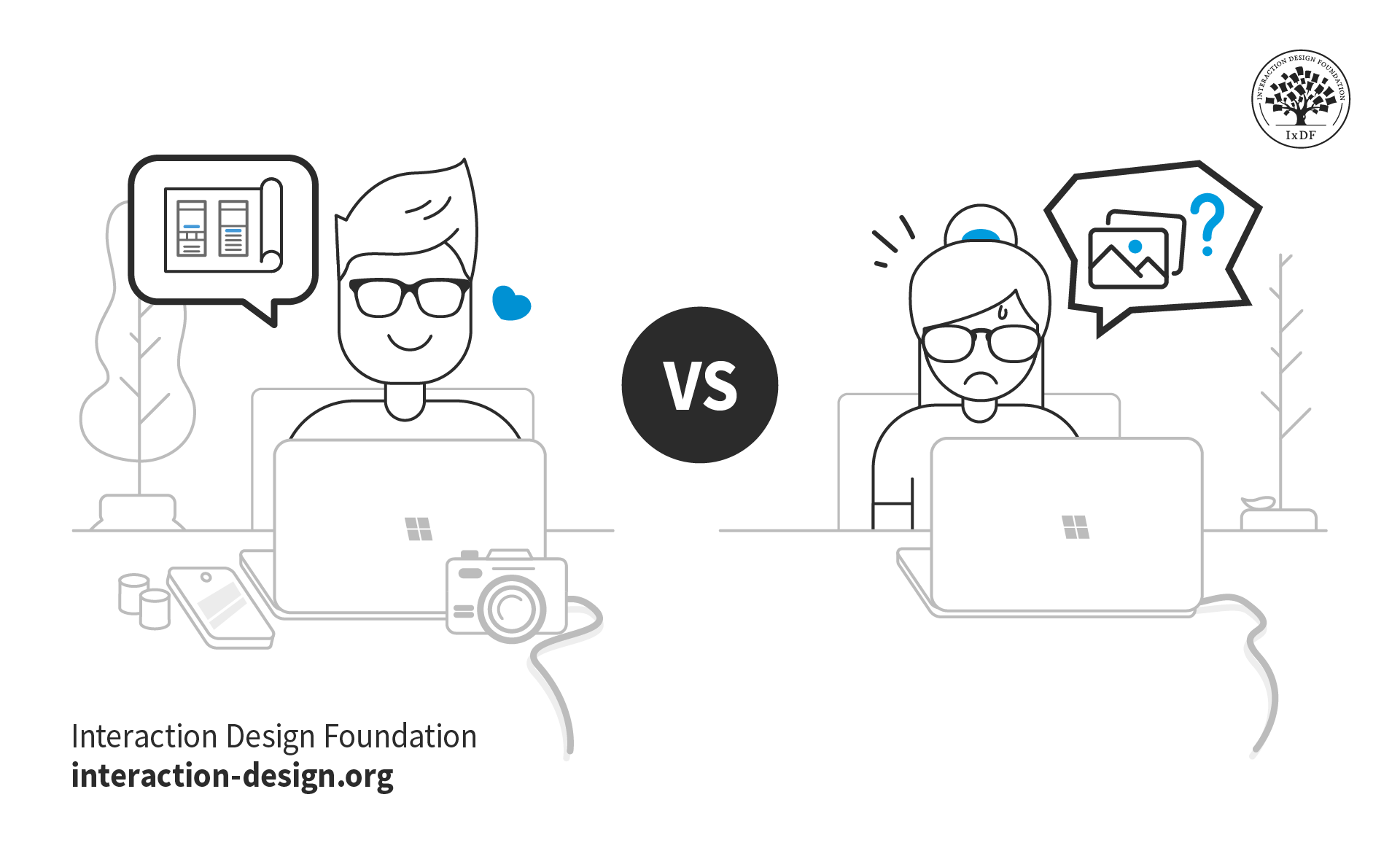
The shortest pencil is greater than the longest memory. Document how to update your portfolio to make the process easier. For example, if you use a website or portfolio builder, take notes and screenshots as you amend your portfolio. When you return months later, you may have forgotten where everything is. In this scenario, your documentation will save you valuable time, and you will thank yourself.
© Interaction Design Foundation, CC BY-SA 4.0
Go back over your case studies and look for areas of improvement. Have you clearly explained your problem-solving approach? Do you have new results you could include about a project? For instance, if an app you worked on received many 5-star reviews recently for features you improved, this must go in your case study.
During this process, you’ll reflect on all the skills you possess and love using (both new and old). Reflections like these will help you grow your abilities further and understand your different passions in UX. Check that your UX case studies reflect who you are as a designer today and where you want to head.
4. More Bang for Your Buck: Repurpose Your UX/UI Design Portfolio for Social Media
You should be proud of your portfolio! It reflects your distinct design style and showcases your best work. So why not show it off a little? If you repurpose your portfolio content, you’ll maximize its value and extend its reach.
You could simply share a link to your portfolio on social media and call it a day. But what if you rework individual sections of your case studies and post them as a series?
If you break down your past projects into bite-size chunks, your followers will likely engage with them more. Additionally, you will open the floor for conversation and perhaps pick up a design tip or two. This approach helps build your brand and presence on social media, and you may even catch the attention of some hiring managers.
In this video, Nakita M. Pope, Chief Chick and Principal Brand Strategist of Branding Chicks, explains the benefits of a brand and how it can be a valuable asset in difficult times:
Show
Hide
video transcript
- Transcript loading…
If the social media posts are a success, you can take it a step further and create a video walkthrough of your portfolio. Video allows you to narrate your thoughts and better communicate your personality. If a video is available to potential employers, it gives them another opportunity to get to know you more.
As you build your social media presence, be wary that it doesn’t turn into a full-time commitment (unless this is what you want!) Find out from Nikita how to avoid this common mistake:
Show
Hide
video transcript
- Transcript loading…
The Take Away
Is your UX portfolio complete? That’s a trick question—it never is! Your portfolio will evolve throughout your career, and there are plenty of approaches you can take to squeeze the most out of this valuable asset:
First, before you drop your portfolio on the hiring manager's desk, update it to ensure it aligns with the job role and company.
Second, you’re a designer! Treat your portfolio like any other project and collect as much user feedback as possible. Ask your network, interviewers and designers you admire. A variety of feedback will give you valuable insights that will strengthen your portfolio.
Third, even if you’re not looking for a new role, take the time to update your UX portfolio regularly. You never know when you’ll need to use it, and doing so will help sharpen your focus on your career path.
Finally, your portfolio is full of outstanding, optimized content. Repurpose your case studies on social media to build your brand and attract potential employers.
References and Where To Learn More
Want to create a portfolio that gets you hired? Take our course, Build a Standout UX/UI Portfolio: Land Your Dream Job, and learn how to showcase your skills, tell compelling project stories, and impress employers.
Discover the building blocks and best practices for your brand in our Master Class, Beyond Design: Practical Tips for Freelancing & Creating Your Brand.
Join an IxDF Local Group near you to make meaningful connections that fast-track your career.
Find out the biggest mistakes made in 370 applications for two junior UX positions from hiring manager Yan Grinshtein.
Read our Top 6 Tips to Make Your UX Portfolio Stand Out.
Images
Hero image: © Interaction Design Foundation, CC BY-SA 4.0
